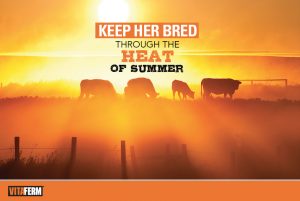Many producers can take for granted the importance of a well thought out mineral program. The purpose of developing a yearly mineral supplementation program is to help balance the macro and micro mineral requirements of cattle to keep them healthy and maintain optimal performance. However, what is best for one producer’s operation isn’t necessarily what […]
Tag: VitaFerm HEAT
VitaFerm Gain Smart Stocker HEAT Helps Hinder Health Challenges on South Dakota Ranch
In the spring of 2017, Melynda Gress of Y-Cross Inc., was looking for a supplement alternative for her backgrounding operation. Located in the northwest corner of South Dakota where she and her family run 800 to 1,000 yearlings each spring and summer, she knew she needed a more natural mineral option for her calves. Two […]
Natural Insect Control
The smallest of creatures tend to be the biggest pests around livestock. The warmer days and hot weather brings out the worst of the flies and other insects each year, and livestock producers continually look for alternative forms of insect control. Cattle producers should know that in addition to the traditional chemical methods to keep […]
Keeping Bulls Fertile During Summer’s Heat
When we think about reproduction in the herd, our first thoughts immediately shift to the cows. Are they at the proper body condition to breed? When do we need to synchronize and breed them to hit our target calving window? However, the bulls contribute their genetics to each calf, and work harder than the cows […]
Keep Her Bred Through the Heat of Summer
Cattle producers go to great lengths to do whatever it takes to get their cows bred. But what about after they are bred? Keeping a cow bred, especially during the summer months, can be equally as challenging. Typically, if a fertile bull breeds cows at the correct time, fertilization rates should nearly reach 100%. However, […]
VitaFerm Fly Control Options
One of the greatest advantages that cattlemen still have is being able to select the management practices that work best for their situation. It has always been important to BioZyme® that we offer products that can be used by a wide array of cattlemen to fit their specific production needs. As spring approaches, and you […]
Fescue: Can’t Live With It, Can’t Live Without It
Grass is a key component in any grazing operation, especially in the summer. Tall fescue is the most widely adapted forage in the U.S. It is a persistent grass that is easy to establish, tolerant of a wide range of management regimes, and produces good forage yields. However, it is a relatively low palatability forage […]







